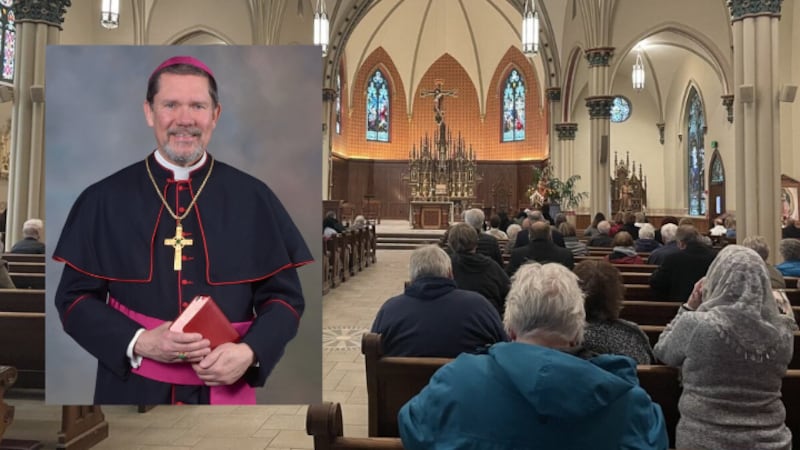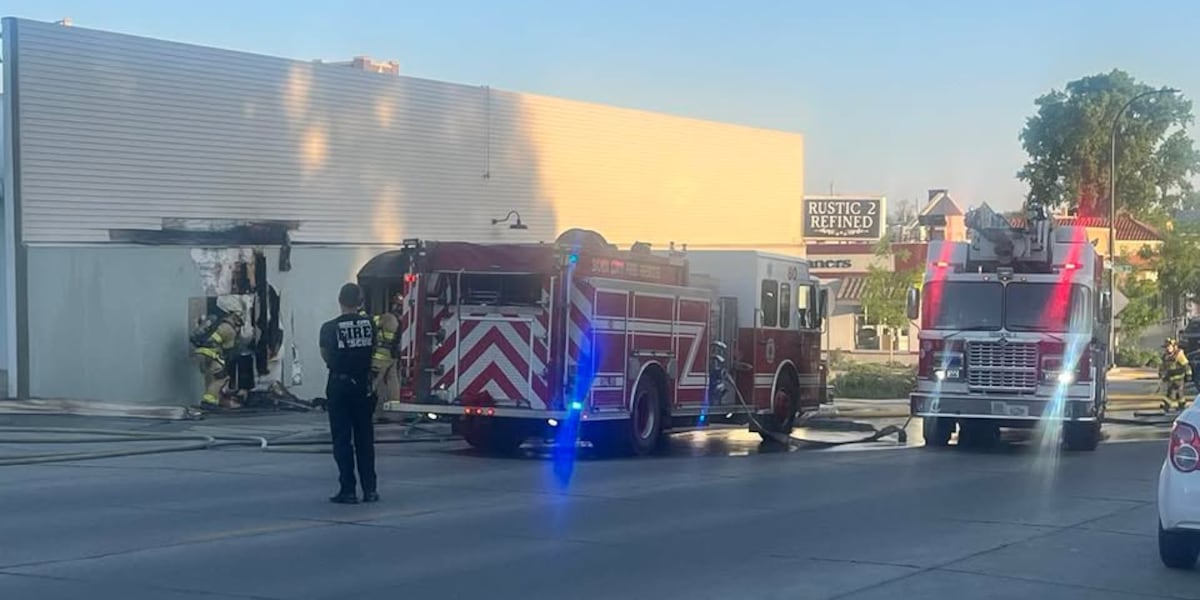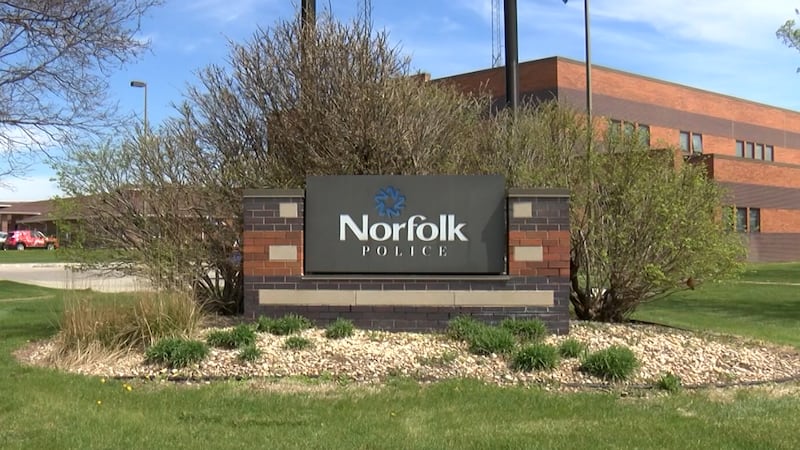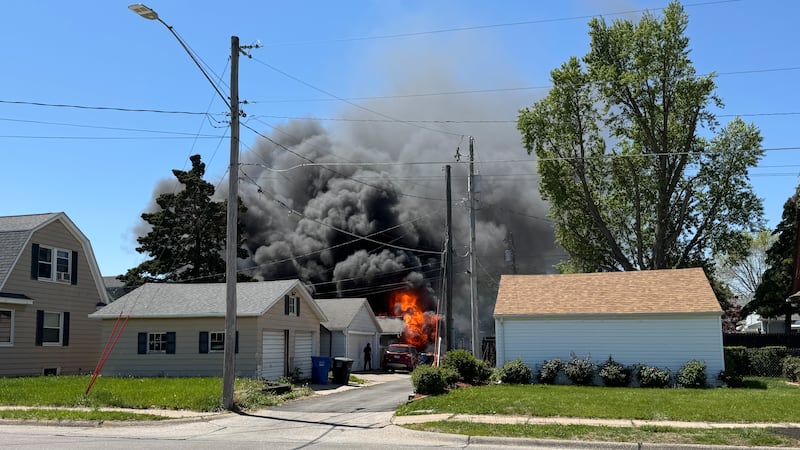## A Blooming Blaze: How a Sioux City Planter Box Turned Into a Firestorm It’s a sight no business owner wants to see: flames licking at the edge of their property. But in Sioux City, a routine planter box became an unexpected inferno, sending shockwaves through the community. This isn’t just a story about a fire; it’s a glimpse into the dangers lurking in plain sight and the crucial lessons we can learn from unexpected disaster.
Extent of Damage

The fire, which originated in a planter box situated outside Rustic 2 Refined thrift shop, caused significant damage to the building’s exterior. According to Unionjournalism’s analysis of photographs and video footage from the scene, firefighters were observed utilizing saws to dismantle sections of the building’s exterior, revealing charred wood within the structural frame. This indicates the fire’s intensity and the potential for structural compromise.
While initial reports indicate minimal damage to the interior, the extent of smoke and heat damage remains unclear. It is crucial to note that even if no significant structural damage is evident, smoke and soot can pose serious health hazards and necessitate extensive cleaning and restoration efforts.

Confirmation of Absence During the Fire
Thankfully, no individuals were present inside the Rustic 2 Refined thrift shop at the time the fire broke out. The shop, located at 2000 Pierce Street, had closed its doors at 4:00 p.m. on Sunday, May 11th, according to information obtained from Unionjournalism’s sources. This fortunate circumstance prevented any potential injuries or loss of life.

Potential Causes of Fire Spread from Planter Box
The precise cause of the fire remains under investigation by Sioux City Fire and Rescue. However, based on the initial information available, several potential factors could have contributed to the rapid spread of the fire from the planter box to the building’s exterior:
- Flammable Materials in the Planter: Planter boxes often contain organic materials such as soil, mulch, and plant debris. These materials are highly combustible and can ignite easily, especially when exposed to heat sources.
- Proximity to Building Materials: The planter box’s location adjacent to the building’s exterior likely facilitated the fire’s spread to combustible building materials, such as wood siding or roofing.
- Wind Conditions: If wind conditions were present, they could have carried embers or flames from the planter box to nearby combustible materials, accelerating the fire’s growth.
- Choose Non-Combustible Materials: Opt for planters constructed from fire-resistant materials, such as concrete, metal, or ceramic.
- Regularly Inspect Planters: Conduct frequent inspections of planters for signs of damage, leaks, or debris accumulation. Promptly address any potential hazards.
- Maintain Safe Distances: Position planters a safe distance away from buildings, flammable materials, and other potential ignition sources.
- Use Fire-Resistant Fillers: Opt for fire-resistant materials, such as gravel or sand, as fillers in planters instead of flammable materials like wood chips or mulch.
- Keep Planters Watered: Regularly water the plants and soil in planters to minimize the risk of dryness and ignition.
- Install Smoke Alarms: Ensure that smoke alarms are installed on every level of the building and tested regularly.
- Develop and Practice an Evacuation Plan: Create a clear and concise evacuation plan for your business or home and practice it regularly with all occupants.
- Keep Fire Extinguishers Accessible: Ensure that fire extinguishers are readily accessible and that all occupants are trained in their proper use.
- Be Cautious with Heating Sources: Exercise caution when using heating appliances, fireplaces, and candles. Never leave them unattended.
- Prevent Clutter: Clutter can obstruct escape routes and fuel fire growth. Keep walkways and exits clear.
- Testing of Smoke Alarms and Fire Extinguishers:
- Inspection of Fire Sprinkler Systems:
- Evaluation of Fire Suppression Systems:
- Review of Evacuation Plans:
It is essential to note that even a seemingly small fire can spread rapidly if not contained promptly. The fire at Rustic 2 Refined serves as a stark reminder of the importance of fire safety precautions, particularly for businesses that utilize outdoor planters.

Beyond the Blaze: Implications and Safety Considerations
Safety Precautions for Businesses Regarding Outdoor Planters
Businesses that incorporate outdoor planters into their landscape design should prioritize fire safety by implementing the following precautions:
Fire Prevention Tips for Businesses and Homeowners

Fire safety is a shared responsibility. Businesses and homeowners alike can contribute to a safer environment by following these essential tips:
Importance of Fire Safety Inspections and Maintenance

Regular fire safety inspections and maintenance are crucial for identifying potential hazards and ensuring that fire safety systems are functioning correctly. Businesses should schedule professional fire safety inspections at least annually, or more frequently if required by local regulations. These inspections should include:
By prioritizing fire safety, businesses and homeowners can significantly reduce the risk of fire-related incidents and protect themselves, their employees, and their property.
Conclusion
The fire that erupted outside a Sioux City business, originating from a seemingly innocuous planter box, serves as a stark reminder of the unpredictable nature of fire and the importance of preparedness. Though thankfully contained and causing minimal damage, the incident highlights the potential for even seemingly minor sources to ignite and escalate rapidly. This underscores the need for businesses and residents alike to remain vigilant, practice fire safety measures diligently, and ensure their emergency preparedness plans are robust and up-to-date.
The incident also raises questions about the safety of decorative elements and landscaping materials in close proximity to buildings. The investigation into the cause of the fire will hopefully shed light on the specific factors that contributed to this event, potentially leading to valuable lessons for fire prevention strategies. Ultimately, this event is a call to action – a chance to re-examine our own fire safety practices and ensure we are doing everything possible to protect ourselves, our property, and our communities from the devastating consequences of fire.

